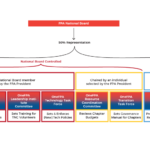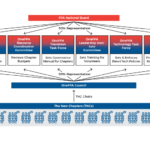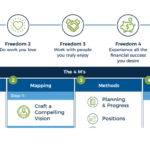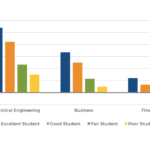
The FPA has trumpeted its recent OneFPA Network proposal as a vital “transformational change” for the organization, going so far as to say that the FPA will not be able to withstand the rapidly intensifying challenges in the landscape of membership associations without it, and that the organization simply won’t have the resources to survive and thrive at the current level of organizational separation between National and its (86 independent) chapters.
However, a deeper look at the OneFPA Network initiative reveals that the proposed solution may be about far more than “just” the virtues of centralized functionality to gain greater organizational cost efficiencies and economies of scale. As embedded in the OneFPA Network proposal is a requirement that what has been estimated at nearly $4M of cash in individual chapter reserves must be turned over to National when the chapter affiliation agreements are dissolved at the end of 2019.
And while FPA has maintained that local leaders of The New Chapters (TNCs) that replace the existing independent chapter system will still have control over their local budgets, in reality, the TNC budgets will have to comply with whatever National sets as its strategic framework and initiatives, and have their budgets conform to policies set by a new OneFPA Resource Coordination Committee, whose purpose – as the name literally implies – is to “coordinate” resources between National and its chapters. A committee on which the TNCs themselves will have 50% representation (with the other 50% coming directly from the National Board)… but which will ultimately be controlled by a tiebreaker-voting Chair to be appointed directly by National.
In fact, a deeper look at the new OneFPA committee structure reveals that in the case of every committee that has material financial or other decision-making authority over the new chapters, National has retained the right to appoint a Chair who ultimately sets the agenda of the committee and casts the tiebreaking vote in the event of a National-vs-chapters dispute. In addition, National has also reserved its own right to alter or outright disband any of its committees at any time – effectively neutering any real sharing of power that its “Participatory Governance” structure might have otherwise provided. And raising the question of whether dissenting chapters might try to pre-emptively leave the FPA with any excess operating reserves they have and affiliate themselves with a new/alternative membership association instead, like NAPFA, the Investments & Wealth Institute, or even the CFP Board itself.
Arguably, though, the biggest concern of the new OneFPA Network is not merely that FPA National will gain oversight control of how chapters spend their assets, but that the key aspects of how chapters generate their revenue – from chapter assessment dues, to the all-important sponsor relationships – have not yet even been determined under the new structure, except to recognize that in the future all dues and sponsor relationships will be under the control of National-Board-controlled committees that will then decide whether and how much of that money to share with the chapters (or not).
In point of fact, though, it is perhaps not entirely surprising that the OneFPA Network may be less about cost-saving efficiencies of centralized functionality, and more about the raw money itself – from existing chapter reserves that National will have set their own policies over, to future chapter surpluses (i.e., profits from successful events) that TNCs won’t necessarily have any right to at all, or chapter dues assessments and key sponsorship arrangements – as a deeper look at FPA National’s financial reports to members reveals that, while membership has declined “just” about 15% in the past decade, its revenues are down by nearly 35%, driven by a 45% drop in sponsorship and event revenue and a nearly 90% drop in advertising revenue for the Journal of Financial Planning, collectively blowing a nearly $4.5M per year hole in the FPA’s operating budget since 2008.
In the meantime, the reality is that many or even most of the key initiatives that the FPA states it hopes to accomplish by decentralizing its chapters into the OneFPA Network – from updating its membership database and technology systems, to formulating a National-chapter shared sponsorship arrangement, creating a new Leadership Institute, and implementing more consistent “best practices” across its chapters to provide for a more consistent member experience – could arguably be done already without the OneFPA Network, and should have been done already… except for the fact that, despite many such systems requests from the chapters for nearly 15 years, the National organization and its leadership have failed to execute them successfully enough for the chapters to actually want to implement National’s solutions in the first place.
Which ultimately raises a question about the true elephant in the room: is the real problem of FPA a failure of its chapters to operate efficiently enough to drive membership growth – the blame that FPA National is implicitly placing on the shoulders of the chapters and thus “necessitating” their dissolution into the OneFPA Network as a solution – or is the problem actually that the FPA is still largely operating under the same leadership for more than 20 years (when current CEO Lauren Schadle and Strategic Director/COO David Brand first became leaders in the ICFP), throughout which membership has remained stagnant and revenue has dangerously declined... and that perhaps today’s leadership simply isn’t able to figure out what it takes to successfully execute a financially viable growth plan for the FPA in the current environment (especially in light of the fact that every other financial planning membership association has increased its membership by more-than-50% since their pre-financial-crisis highs)? Or stated more simply: perhaps the FPA National Board needs to take a hard look at whether the best path forward for the FPA is to create The New Chapters, or to revisit whether and how it holds its own staff leadership accountable for failing to align and grow the organization, and whether it’s time for a leadership change to create The New National, instead?





 Welcome, everyone! Welcome to the 73rd episode of the Financial Advisor Success Podcast!
Welcome, everyone! Welcome to the 73rd episode of the Financial Advisor Success Podcast!

 Welcome, everyone! Welcome to the 68th episode of the Financial Advisor Success Podcast!
Welcome, everyone! Welcome to the 68th episode of the Financial Advisor Success Podcast!
 Welcome, everyone! Welcome to the 62nd episode of the Financial Advisor Success Podcast!
Welcome, everyone! Welcome to the 62nd episode of the Financial Advisor Success Podcast!

 Welcome, everyone! Welcome to the 58th episode of the Financial Advisor Success Podcast!
Welcome, everyone! Welcome to the 58th episode of the Financial Advisor Success Podcast!
